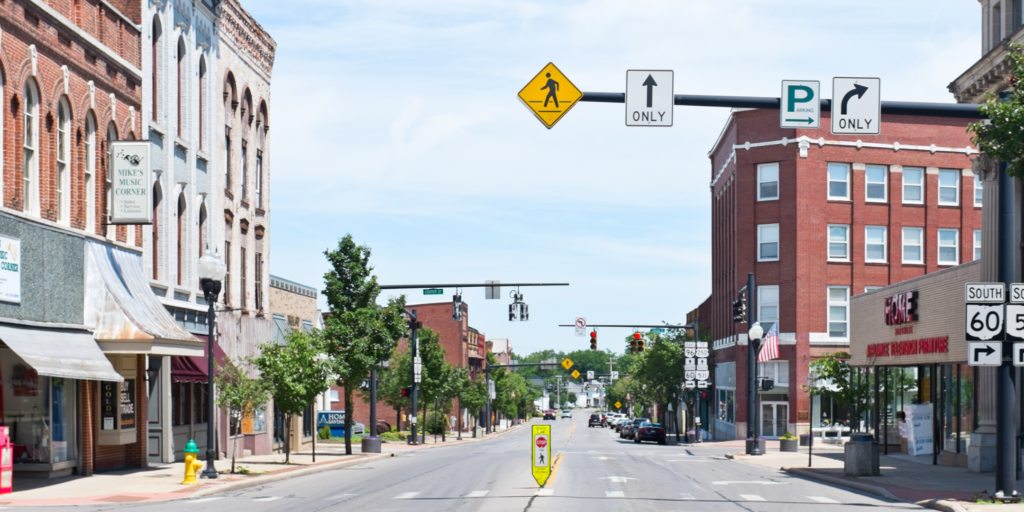Across Ohio, journalists have been holding community conversations to ask: What will it take to make life better here, and how can we make that happen?
Those conversations come to Ashland and Mansfield 6-8 p.m. Jan. 27-28 respectively, with food and open table conversations about what people in Mid-Ohio need to improve life in this mix of historic industrial, picturesque recreational and robust agricultural communities.
Will a better life come from trade agreements with China? Better public education? Better healthcare for pregnant mothers and babies? A downtown improvement district? Increased defense spending? More effective agricultural programs?
Journalists who have asked this question in Akron, Dayton, Lebanon, Athens, Trotwood and elsewhere have learned that the solutions to a better life often have differed from public policies enacted at the local and state levels.
So what will be the answers for people who live in and around Mansfield? And Ashland?
The listening events are part of the Your Voice Ohio media project, in which journalists sit with residents of their communities to better understand and represent the people in the 2020 state and national elections — before candidates come to town and define issues the way they want. What journalists have learned in the last two years listening to more than 1,200 people discuss addiction, the economy and the future is that people and candidates have very different ideas.
These Mid-Ohio sessions are sponsored by the Richland Source and Ashland Source, news organizations unique to the Buckeye State because of their commitment to identifying solutions to community challenges and acting as catalysts for action.
Mansfield and Ashland are distinctly different communities, and how they frame their futures likely will be framed by their contrasting experiences.
Ashland at one time was more dependent on the goods-producing sector – manufacturing – than was Richland County. But Richland County, over time, lost more higher-income manufacturing jobs than did Ashland, resulting in a shift in their economic fates.
- Population since 2000, when both counties experienced peak employment: Ashland has grown 2 percent, about the same as the state of Ohio; Richland has declined 6 percent or 8,000 people – 11th largest percentage drop of Ohio’s 88 counties.
- Median Household Income: During the heyday of manufacturing growth in the 1960s, median household income in Richland County was about 10 percent higher than Ashland and also higher than the national rate. Today, Richland is about 10 percent below Ashland and 20 percent below the U.S. household income.
- Poverty: In the 1960s, Ashland’s poverty rate was one percentage point higher than Richland’s. Today, 17 percent of Richland County residents are in poverty, 15 percent in Ashland.
- Jobs: Ohio, Ashland and Richland production employment peaked in 1979. Since then, they have lost 41 percent, 45 percent and 50 percent of their manufacturing jobs, respectively.
- Diversity: About 10 percent of the Richland County population identifies as black; less than 1 percent in Ashland County.
- Education: Ashland and Richland counties both rank below the Ohio average for percentage of Ohioans with at least a four-year college degree, and Ohio falls below the national average.
So, what will it take to turn all of those numbers into positives? Or are there other measures for a successful community?
People will sit at tables with journalists and leaders to discuss what their hopes are and how those might be achieved. Themes have emerged across the state, as have special needs for each community.
The questions journalists will ask residents are:
- What does a community look like where people are happy and live fulfilled lives?
- What would you change about your community to move in the direction of happy and fulfilled lives?
- What are the assets of the community that can be applied to making change?
- What are actions that can be taken by leaders, people and journalists to bring about those changes?
In previous meetings, journalists and public officials walked away with ideas that came from respectful dialogue. In Akron, for example, a simultaneous scientific telephone poll suggested people were concerned most about road repairs, snow removal and inadequate government services. But when about 200 met in dialogue, the conversations became more complex, they identified shared concerns and developed solutions. People also realized that they have a role and were energized by what they could do.
In the Marietta-Parkersburg area, conversations about addiction resulted in improvements to an addiction hotline, creation of a drug court and research on which treatments are most effective for addiction recovery.
In Warren, the urban area to experience the steepest and longest economic decline in Ohio, residents said that the community should stop waiting for outside help and instead focus on sustainability and resilience from within.
After the session, one Warren resident wrote this thought to be shared: “Our community as a whole is loving, challenging, empathetic, and resilient. We want to rise to set the example for the world again! We just need to come together on where to begin.”
And the community admonition for journalists: Write about solutions that offer hope.
For the Mid-Ohio conversations, participants do not need to be from the cities of Mansfield or Ashland – they are open to all residents of the region. Because food will be served, please register online by visiting the link to the event you wish to attend.
Ashland session: 6 p.m. Monday Jan. 28, The YMCA of Ashland, 207 Miller Street, Ashland.
Mansfield session: 6.m. Tuesday Jan. 29, Idea Works, 40 West 4th Street, Mansfield.
More information is available at the Your Voice Ohio events web page.






Decriminalizing cannabis is step number 1, it’s a joke that we’re not at that point in 2020. There are actual violent crimes that the police’s time would be much better spent on. Stop worrying about people enjoying vices without hurting anyone else. Sure, if someone tries robbing you to support their crack habit you have every right to shoot them. If decriminalizing drugs somehow makes you feel less safe, perhaps take a look at Portugal and see how they cut their addiction rate by over 75%.